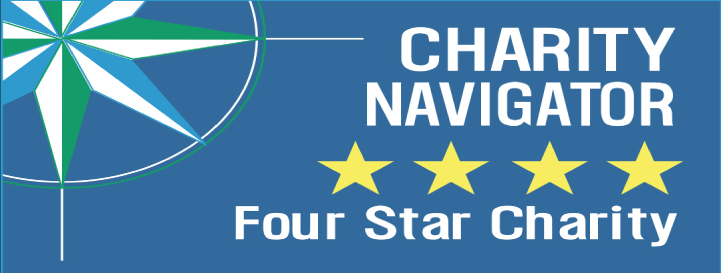Watch and Wait
The watch and wait approach, also known as “active surveillance” is a strategy for managing rectal cancer. Like other therapies, watch
and wait does not offer a “one size fits all” approach to managing your cancer, but it may be appropriate depending on the specifics
of your disease and how inclined you are to seek aggressive treatment.
Watch and Wait
The watch and wait approach, also known as “active surveillance” is a strategy for managing rectal cancer. Like other therapies, watch
and wait does not offer a “one size fits all” approach to managing your cancer, but it may be appropriate depending on the specifics
of your disease and how inclined you are to seek aggressive treatment.
Watch and Wait
The watch and wait approach, also known as “active surveillance” is a strategy for managing rectal cancer. Like other therapies, watch
and wait does not offer a “one size fits all” approach to managing your cancer, but it may be appropriate depending on the specifics
of your disease and how inclined you are to seek aggressive treatment.
As always, a discussion with your physician is in order if you would like to approach your care with a watch and wait strategy.
Currently, the standard of care for stage II and III rectal cancers is neoadjuvant chemoradiation followed by surgical resection of the tumor, with or without adjuvant chemotherapy. This is chemotherapy and radiation therapy given before surgery, then surgery to remove the tumor, and then possible administration of chemotherapy after surgery.
The watch and wait approach comes into play after administration of neoadjuvant chemoradiation. After neoadjuvant therapy, your physician will order imaging tests to determine your clinical response to chemoradiation and suggest appropriate next steps. Clinical response is normally determined around eight weeks post-treatment. At this point, next steps will likely include surgery or implementation of “watch and wait”.
As always, a discussion with your physician is in order if you would like to approach your care with a watch and wait strategy.
Currently, the standard of care for stage II and III rectal cancers is neoadjuvant chemoradiation followed by surgical resection of the tumor, with or without adjuvant chemotherapy. This is chemotherapy and radiation therapy given before surgery, then surgery to remove the tumor, and then possible administration of chemotherapy after surgery.
The watch and wait approach comes into play after administration of neoadjuvant chemoradiation. After neoadjuvant therapy, your physician will order imaging tests to determine your clinical response to chemoradiation and suggest appropriate next steps. Clinical response is normally determined around eight weeks post-treatment. At this point, next steps will likely include surgery or implementation of “watch and wait”.
As always, a discussion with your physician is in order if you would like to approach your care with a watch and wait strategy.
Currently, the standard of care for stage II and III rectal cancers is neoadjuvant chemoradiation followed by surgical resection of the tumor, with or without adjuvant chemotherapy. This is chemotherapy and radiation therapy given before surgery, then surgery to remove the tumor, and then possible administration of chemotherapy after surgery.
The watch and wait approach comes into play after administration of neoadjuvant chemoradiation. After neoadjuvant therapy, your physician will order imaging tests to determine your clinical response to chemoradiation and suggest appropriate next steps. Clinical response is normally determined around eight weeks post-treatment. At this point, next steps will likely include surgery or implementation of “watch and wait”.
What is Watch and Wait?
In some patients, neoadjuvant chemoradiation is effective enough to allow patients to achieve what is known as “complete clinical response,” that is, absence of any rectal tumor during restaging by imaging, endoscopy, and clinical examination. Complete clinical response is not the same as complete pathological response, which is defined as the total absence of residual cancer cells after treatment.
Patients who show complete clinical response may be offered the option to avoid surgery by utilizing the watch and wait approach. Patients with near-complete clinical response may also be given the option to defer surgery until their response has been reassessed in the following weeks.
Watching and waiting is, like it sounds, watching and waiting instead of undergoing surgery.
If you decide to use the watch and wait approach, expect to undergo active surveillance following administration of neoadjuvant chemoradiation. The most common concern for patients under active surveillance is local tumor regrowth – the risk of this is highest in the first two years of watch and wait. Due to the risk of regrowth, intensive monitoring is required during this time period.
You will not receive any treatment while watching and waiting, unless test results call for it. Tests and exams will be frequently administered in an attempt to catch early signs of tumor regrowth. These tests often include:
In order for the watch and wait approach to be viable, patients must agree to adhere to a strict surveillance program. This typically involves imaging or other testing at least three times per year for the first two years, followed by less frequent testing after this two-year window.
Patients who experience tumor regrowth during watch and wait will often be faced with TME surgery as described above. If the tumor regrowth is small or superficial, with no lymph node involvement, a local tumor excision may be an option.
What is Watch and Wait?
In some patients, neoadjuvant chemoradiation is effective enough to allow patients to achieve what is known as “complete clinical response,” that is, absence of any rectal tumor during restaging by imaging, endoscopy, and clinical examination. Complete clinical response is not the same as complete pathological response, which is defined as the total absence of residual cancer cells after treatment.
Patients who show complete clinical response may be offered the option to avoid surgery by utilizing the watch and wait approach. Patients with near-complete clinical response may also be given the option to defer surgery until their response has been reassessed in the following weeks.
Watching and waiting is, like it sounds, watching and waiting instead of undergoing surgery.
If you decide to use the watch and wait approach, expect to undergo active surveillance following administration of neoadjuvant chemoradiation. The most common concern for patients under active surveillance is local tumor regrowth – the risk of this is highest in the first two years of watch and wait. Due to the risk of regrowth, intensive monitoring is required during this time period.
You will not receive any treatment while watching and waiting, unless test results call for it. Tests and exams will be frequently administered in an attempt to catch early signs of tumor regrowth. These tests often include:
In order for the watch and wait approach to be viable, patients must agree to adhere to a strict surveillance program. This typically involves imaging or other testing at least three times per year for the first two years, followed by less frequent testing after this two-year window.
Patients who experience tumor regrowth during watch and wait will often be faced with TME surgery as described above. If the tumor regrowth is small or superficial, with no lymph node involvement, a local tumor excision may be an option.
What is Watch and Wait?
In some patients, neoadjuvant chemoradiation is effective enough to allow patients to achieve what is known as “complete clinical response,” that is, absence of any rectal tumor during restaging by imaging, endoscopy, and clinical examination. Complete clinical response is not the same as complete pathological response, which is defined as the total absence of residual cancer cells after treatment.
Patients who show complete clinical response may be offered the option to avoid surgery by utilizing the watch and wait approach. Patients with near-complete clinical response may also be given the option to defer surgery until their response has been reassessed in the following weeks.
Watching and waiting is, like it sounds, watching and waiting instead of undergoing surgery.
If you decide to use the watch and wait approach, expect to undergo active surveillance following administration of neoadjuvant chemoradiation. The most common concern for patients under active surveillance is local tumor regrowth – the risk of this is highest in the first two years of watch and wait. Due to the risk of regrowth, intensive monitoring is required during this time period.
You will not receive any treatment while watching and waiting, unless test results call for it. Tests and exams will be frequently administered in an attempt to catch early signs of tumor regrowth. These tests often include:
In order for the watch and wait approach to be viable, patients must agree to adhere to a strict surveillance program. This typically involves imaging or other testing at least three times per year for the first two years, followed by less frequent testing after this two-year window.
Patients who experience tumor regrowth during watch and wait will often be faced with TME surgery as described above. If the tumor regrowth is small or superficial, with no lymph node involvement, a local tumor excision may be an option.
How to Discuss Watch and Wait
Not all patients will be eligible for a watch and wait approach to managing their rectal cancer. If you’re interested in using this approach, it is important to begin a discussion with your physician, and if implemented, be prepared for intensive monitoring. Consider this list of questions when discussing this approach with your care team:
While growing evidence supports that the watch and wait approach is a safe and effective option for patients with complete clinical response to neoadjuvant chemoradiation, it is important to remember the risks and benefits to the watch and wait approach when compared to undergoing surgery have not yet been totally defined. It is important to have an open and honest conversation with your physician about your treatment goals and the potential risks and benefits of utilizing the watch and wait approach.
How to Discuss Watch and Wait
Not all patients will be eligible for a watch and wait approach to managing their rectal cancer. If you’re interested in using this approach, it is important to begin a discussion with your physician, and if implemented, be prepared for intensive monitoring. Consider this list of questions when discussing this approach with your care team:
While growing evidence supports that the watch and wait approach is a safe and effective option for patients with complete clinical response to neoadjuvant chemoradiation, it is important to remember the risks and benefits to the watch and wait approach when compared to undergoing surgery have not yet been totally defined. It is important to have an open and honest conversation with your physician about your treatment goals and the potential risks and benefits of utilizing the watch and wait approach.
How to Discuss Watch and Wait
Not all patients will be eligible for a watch and wait approach to managing their rectal cancer. If you’re interested in using this approach, it is important to begin a discussion with your physician, and if implemented, be prepared for intensive monitoring. Consider this list of questions when discussing this approach with your care team:
While growing evidence supports that the watch and wait approach is a safe and effective option for patients with complete clinical response to neoadjuvant chemoradiation, it is important to remember the risks and benefits to the watch and wait approach when compared to undergoing surgery have not yet been totally defined. It is important to have an open and honest conversation with your physician about your treatment goals and the potential risks and benefits of utilizing the watch and wait approach.




